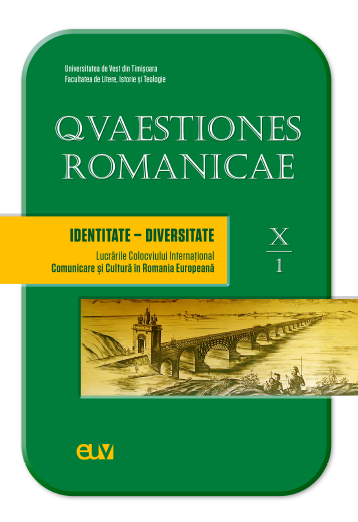Histoire et symbole biblique dans le roman chevaleresque
Abstract: (History and biblical symbolism in the chanson de geste) The fall of the Roman Empire happened during the 5th century under the attack of the German tribes leading to the degradation of the social and political life of Europe and throwing the continent into the Dark Ages for the following centuries. The lack of the cohesion granted by the Roman Empire, as well as the migrations of the barbarian tribes, always in conflict with their neighbors, are just some of the causes that determined the gradual loss of all the great accomplishments of the empire, from agriculture to infrastructure (road network and aqueducts) leading to a general decay of social life and a ruralization of cities. This resulted also in the strong decay of cultural and artistic life, except in the period of Carolingian Renascence. After the fall of the Western Roman Empire, the church was the only factor of social cohesion and had an immense impact on all layers of political, social, and cultural life. All schools belonged to the church and the only few educated people were clerics who performed various functions in the service of some noblemen. Medieval people lived surrounded by symbols, the most important book was the Bible, and symbols were considered a visible representation of the invisible, the key to the comprehension of the world through understanding the hidden meaning of symbols. Each biblical character of the Old Testament had an equivalent character or event in the New Testament. The church used images as a means of formation and information due to the high level of illiteracy of the people. Symbolism was present in architecture as well, churches being totally symbolic structures, as well as in the political life, from the anointment of kings to the literature of the period, from the chanson de geste to the novel of chivalry. In this communication, we are primarily interested in indicating how some motifs of biblical origin can be used in the chivalric novel Yvain-The Knight with the Lion.
Keywords: Symbol, Bible, Middle Ages, chivalric novel.
Résumé: Au Ve siècle, après la destruction et la chute de Rome sous les coups des tribus germaniques, l'atmosphère politique et sociale se dégrade irréversiblement en Europe et une période dite sombre s'ensuit pendant plusieurs siècles. Le manque de cohésion assuré par l'existence de l'Empire romain ainsi que les migrations de tribus barbares toujours engagées dans des conflits avec leurs voisins ne sont que quelques-unes des conditions qui rendront ce que l'Empire romain a réalisé, de l'agriculture aux infrastructures (réseaux routiers et aqueducs), d'être peu à peu abandonnés et d'assister à une ruralisation des villes et implicitement à une décrépitude de la vie sociale. Cette ruralisation entraînera également une forte décadence de la vie culturelle et artistique (à l'exception de la Renaissance carolingienne). L'Église demeure, après la chute de l'Empire romain d'Occident, le seul facteur de cohésion sociale en l'absence d'une grande puissance et fait sentir sa présence à tous les niveaux de la vie politique, sociale et culturelle. Le rôle de l'Église était énorme, étant la seule à avoir des écoles, le clergé restant les rares érudits qui remplissaient diverses fonctions près des nobles. L'homme médiéval vit entouré de symboles, le livre de référence étant la Bible, le symbole étant compris comme une union des choses visibles pour démontrer l'invisible, la manière de comprendre le monde passant par la compréhension du sens caché des symboles. Chaque personnage biblique de l'Ancien Testament correspond à un personnage ou à un événement du Nouveau Testament. L'église utilisera l'image comme moyen de formation et d'information des gens en raison du très haut taux d'analphabétisme parmi eux. De plus, le symbolisme dominera à la fois l'art et l'architecture, l'église étant une structure symbolique. Le symbolisme dominera la vie politique, commençant par l'onction des rois et se poursuivant dans la littérature de l'époque, de la chanson de geste au roman chevaleresque. Dans notre communication, nous nous intéressons principalement à indiquer comment certains motifs d'origine biblique peuvent être utilisés dans le roman chevaleresque Yvain ou Le Chevalier au lion.
Mots clés: Symbole, Bible, Église, Moyen Âge, roman chevaleresque.
